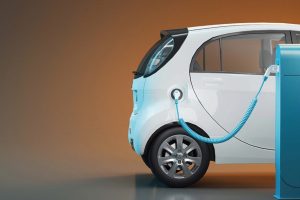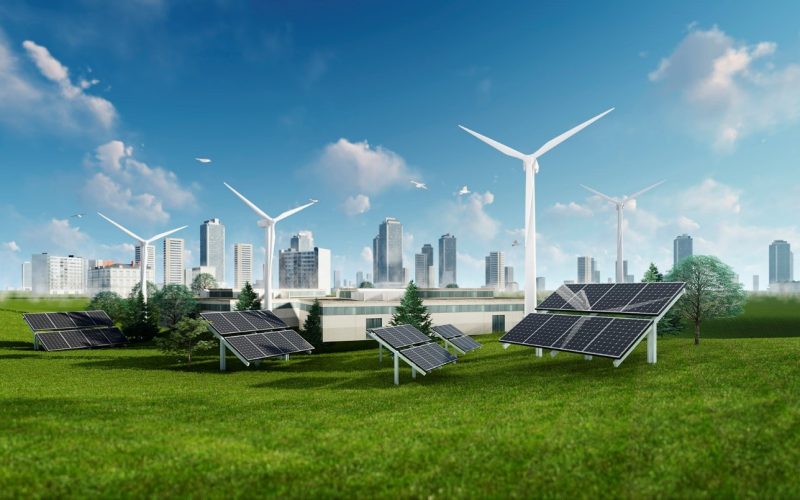The Future of Renewable Energy Products in the Consumer Market
The global landscape of energy consumption is undergoing a significant transformation, driven by the urgent need to mitigate climate change and reduce dependency on fossil fuels. Renewable energy products are at the forefront of this change, offering sustainable alternatives that promise to reshape the consumer market. This article delves into the future of renewable energy products, exploring emerging trends, technological advancements, and the potential impact on consumers and the environment.

The Rise of Renewable Energy Products
Renewable energy products encompass a broad range of technologies that harness natural resources such as sunlight, wind, and water to generate power. Solar panels, wind turbines, and hydroelectric systems are some of the most well-known examples. However, the scope of renewable energy products extends far beyond these traditional technologies.
In recent years, there has been a surge in the development of innovative renewable energy products designed for everyday consumer use. These include solar-powered gadgets, home energy storage systems, and electric vehicles (EVs), all of which are becoming increasingly accessible and affordable.
Solar-Powered Gadgets
Solar-powered gadgets are gaining popularity due to their convenience and eco-friendly nature. From solar chargers for smartphones and laptops to solar-powered outdoor lights and water heaters, these products are designed to reduce reliance on conventional electricity sources. The integration of solar technology into consumer electronics is expected to grow, driven by advancements in photovoltaic (PV) cells that increase efficiency and reduce costs.
Home Energy Storage Systems
Home energy storage systems, such as Tesla’s Powerwall, are revolutionizing the way households manage their energy consumption. These systems store excess energy generated by solar panels or wind turbines, allowing consumers to use it during peak hours or when renewable sources are not available. As battery technology continues to improve, home energy storage systems are becoming more efficient, affordable, and capable of providing backup power during outages.
Electric Vehicles (EVs)
The automotive industry is undergoing a paradigm shift with the rise of electric vehicles. EVs offer a cleaner alternative to traditional gasoline-powered cars, reducing greenhouse gas emissions and reliance on fossil fuels. Major automakers are investing heavily in EV technology, with new models boasting longer ranges, faster charging times, and more affordable price points. The proliferation of EV charging infrastructure further supports the adoption of electric vehicles, making them a viable option for a broader range of consumers.
Technological Advancements Driving the Market
The future of renewable energy products in the consumer market is closely tied to technological advancements. Innovations in materials science, energy storage, and smart technology are driving the efficiency and affordability of renewable energy products.
Advanced Materials
The development of advanced materials is crucial for improving the performance of renewable energy products. For instance, perovskite solar cells have shown great promise in achieving higher efficiency rates compared to traditional silicon-based cells. Similarly, advancements in wind turbine blade materials are enhancing durability and energy capture, making wind energy more cost-effective.
Energy Storage Solutions
Energy storage is a critical component of renewable energy systems, addressing the intermittent nature of sources like solar and wind. Lithium-ion batteries have dominated the market, but emerging technologies such as solid-state batteries and flow batteries offer the potential for higher energy densities, longer lifespans, and safer operation. These innovations are expected to drive down costs and improve the scalability of renewable energy products.
Smart Technology Integration
The integration of smart technology into renewable energy products is enhancing their functionality and user experience. Smart home systems can optimize energy consumption by automatically adjusting lighting, heating, and cooling based on occupancy and weather conditions. Additionally, smart grids enable more efficient distribution of renewable energy, balancing supply and demand in real-time and reducing wastage.
Market Trends and Consumer Adoption
Several market trends are shaping the future of renewable energy products, influencing consumer adoption and driving industry growth.
Increasing Environmental Awareness
A growing awareness of environmental issues is driving consumers to seek sustainable alternatives. This shift in consumer behavior is reflected in the rising demand for renewable energy products. Governments and organizations are also playing a role by implementing policies and incentives that promote the adoption of clean energy technologies.
Declining Costs
The cost of renewable energy products has been steadily declining, making them more accessible to a wider audience. Economies of scale, technological advancements, and increased competition are contributing to lower prices. For example, the cost of solar panels has dropped significantly over the past decade, enabling more households to invest in solar energy systems.
Corporate Sustainability Initiatives
Many corporations are embracing sustainability as a core part of their business strategy. Companies are investing in renewable energy products to reduce their carbon footprint and appeal to environmentally conscious consumers. This trend is driving innovation and creating new opportunities in the renewable energy market.
Government Policies and Incentives
Government policies and incentives play a crucial role in promoting the adoption of renewable energy products. Subsidies, tax credits, and grants can make these products more affordable for consumers. Additionally, regulations that mandate renewable energy usage in new buildings and infrastructure projects are driving demand and encouraging innovation.
Challenges and Future Outlook
While the future of renewable energy products in the consumer market is promising, several challenges must be addressed to realize their full potential.
Infrastructure and Grid Integration
The integration of renewable energy products into existing infrastructure and power grids presents technical and logistical challenges. Upgrading grid infrastructure to accommodate distributed energy sources and ensuring reliable energy supply are critical for widespread adoption.
Consumer Education and Awareness
Educating consumers about the benefits and functionalities of renewable energy products is essential for driving adoption. Misconceptions and lack of awareness can hinder the uptake of new technologies. Effective communication and marketing strategies are needed to inform consumers and build trust in renewable energy products.
Technological and Economic Barriers
Despite declining costs, some renewable energy products still face technological and economic barriers. For instance, the initial investment required for home energy storage systems or electric vehicles can be a deterrent for some consumers. Continued innovation and supportive policies are needed to overcome these barriers and make renewable energy products more accessible.
Conclusion
The future of renewable energy products in the consumer market is bright, driven by technological advancements, market trends, and increasing environmental awareness. Solar-powered gadgets, home energy storage systems, and electric vehicles are just a few examples of how renewable energy products are transforming the way we live and consume energy.
As the market continues to evolve, addressing challenges related to infrastructure, consumer education, and economic barriers will be crucial for realizing the full potential of renewable energy products. With continued innovation and support from governments, corporations, and consumers, renewable energy products have the potential to play a pivotal role in creating a sustainable and resilient energy future.










